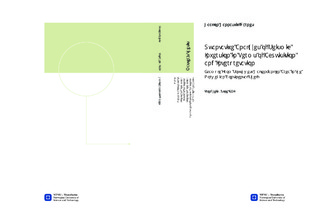| dc.description.abstract | In regular marine acquisition configuration, shallow sources and shallow streamers are used. Because of this configuration the high-frequency content of the seismic is favored, which is needed for sufficient vertical resolution. If the receivers were deployed at a larger depth the low-frequency content would be favored. The low frequencies are needed for inversion, deep penetration and visualization. However, this configuration would attenuate the higher frequencies and would suffer from poor vertical resolution. The attenuation of either high or low frequencies is a result of the receiver ghost, which attenuates higher frequencies for the deep tow, and lower frequencies for the shallow tow. Over/under acquisition method allows the wavefield to be separated into upgoing and downgoing wavefields. The configuration consists of 2 receiver-cables in vertical alignment with each other. By detecting only the upgoing wavefield, we are removing the receiver ghost and hence the frequency bandwidth should be broadened. These cables are towed at 18 and 25 meters, respectively. Regular receiver-cables are normally towed at 7 to 9 meters. Because of the deeper tow, the noise levels should also be lowered and result in a better signal to noise ratio. Post-stack seismic inversion is the process where we analyze the stacked seismic traces and try to reconstruct the velocity structure, or the acoustic impedance, of the sub-surface covered by the seismic. Inversion is sensitive to various parameters and small improvements in the seismic would result in improvements in the inversion volume. In the inversion configuration of this thesis, we are using a background model based on a-priori information from one known well. The a-priori information is used as an initial guess for the inversion to follow. To keep the inversion volumes as data-driven as possible, the inversions were processed with a weight factor on the initial model as low as possible, to enhance the changes made by the differences in the seismic volumes. Quantification of the difference in the inversion volumes based on different acquisition methods for the input seismic resulted in various comparisons of the acoustic impedance volumes. Difference in vertical resolution has been investigated and identified to have a relative difference in favor of the single cable seismic. The differences were due to a change in the wavelet shape and width and also change in dominating frequency of the respective time interval. Comparing the inversion volumes, based on the acquisition method, to their respective average inversion volumes identified changes in the inversion volumes due to feathering of the receiver cables. Further tests illustrated that the feathering had a significant impact on the inversion volumes. Since the feathering causes the receiver cables to deviate from a straight line astern of the vessel, the seismic volume is slightly changed compared to a volume where there is no feathering. Experiments illustrated that the frequency spectra are different. However, the frequency spectrum is not broadened, but shifted and shortened prone to lower frequencies. Dominating frequency was hence lower for cable combination seismic volumes compared to single cable seismic volumes. This resulted also in difference in the seismic wavelet as previously explained. Results indicate a significant change in inversion volumes due to fold, acquisition direction and feathering. Changes caused by the cable combination method were not as first anticipated. Since the method is used with a deeper tow, we were anticipating a significant change in the signal to noise ratio, also considering that receiver ghost is removed when evaluating only the upgoing wave. Results indicate that there was no significant change in signal to noise ratio. However, significant changes in the ratio were found when using the split spread method versus the single direction method (both single cable and cable combination method). This work concludes that the largest impact on the inversion volume is found where we have identified poor alignment of feathering, different acquisition direction and increased fold. The cable combination method doesn’t have significant impact on the inversion volume. Identified changes are quantified in this work and will verify these results. | nb_NO |

